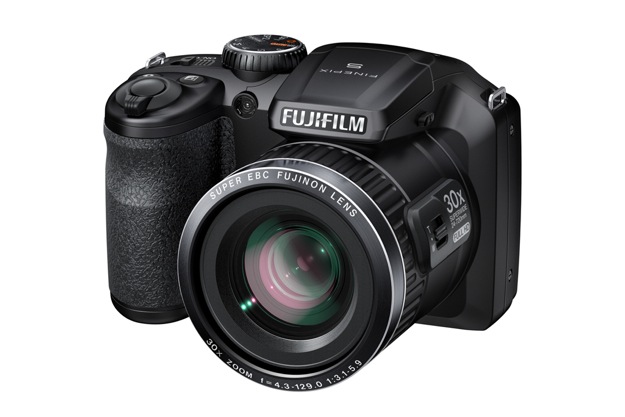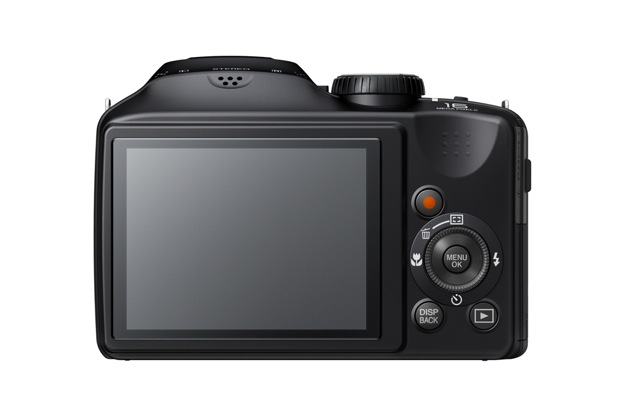 In addition to the FinePix F900EXR and F850EXR cameras, Fujifilm at 2013 CP+ introduced new mega-zoom and entry-level models.
In addition to the FinePix F900EXR and F850EXR cameras, Fujifilm at 2013 CP+ introduced new mega-zoom and entry-level models.
For those who want to step up to a long-zoom camera but aren’t ready or willing to invest in a interchangeable lens system, Fujifilm has for you two new S-Series mega-zoom cameras: the S6800 and S4800. These “all-in-one bridge” cameras feature a 30x Fujinon zoom lens (24-720mm) with optical image stabilization, and “consists of 17 elements in 12 groups, and combines aspherical and ED elements that help to reduce aberrations and promote a superior level of image quality.” A Super Macro mode lets you get as close as 0.78-inches to a subject.
Where they differ is in the components. The S6800 uses a 16-megapixel 0.43-inch back-illuminated CMOS sensor that has a ISO sensitivity of up to 12,800. Autofocus speed is 0.3 seconds, while startup time is 1 second, interval time is 0.5 seconds, and a burst mode of 8 frames per second. The camera can also shoot ultra-high-speed at 60 fps (60 frames max at 1280 x 960) and 120 fps (60 frames max at 640 x 480) for slow-mo capture.

The S4800 has the same sensor size and resolution as the S6800, but it’s a regular CCD, so it lacks the low-light performance of a BI CMOS sensor. Autofocus is still 0.3 seconds, but startup time is 1.3 seconds.
Both cameras have a DSLR-like mode dial and a 3-inch LCD (460K dots for the S6800, 230K dots for the S4800). For video capture, the S6800 shoots HD video at 1080i at 60 fps and slo-mo capture at 480 fps, while the S4800 records in 720p at 30 fps. The two cameras are powered via four AA batteries, so you’ll need to stock up on those or buy some rechargeable ones.

The S6800 comes in black, white, and red, and has a list price of $250. The S4800 comes in black only, and will sell for $230. Both cameras will shelves in March.
In the entry-level JX line, Fujifilm unveiled the FinePix JX680, a compact camera with a 5x optical zoom (26-130mm). Unlike higher-end offerings, the JX680 uses digital image stabilization and a 16-megapixel CCD sensor. It shoots HD at 720p, and has a 3-inch LCD (230K dots).
The FinePix JX680 will list for $100 in March.



